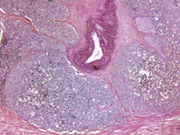Shows the strongest correlation between biochemical recurrence and subsequent systemic progression
MONDAY, June 20, 2016 (HealthDay News) — A prostate-specific antigen cut point of ≥0.4 ng/mL predicts future disease progression, according to a study published in the June issue of The Journal of Urology.
Amir Toussi, M.D., from the Mayo Clinic in Rochester, Minn., and colleagues reviewed long-term prostatectomy outcomes to examine the most appropriate prostate-specific antigen cut point that predicts subsequent disease progression. Data were included for 13,512 patients with cT1-2N0M0 prostate cancer who underwent radical prostatectomy.
The researchers found that a detectable prostate-specific antigen developed in 5,041 patients at a median postoperative follow-up of 9.1 years, and systemic progression developed in 512 patients. The percentage of patients experiencing a continued prostate-specific antigen increase over five years was 61, 67, and 74 percent, respectively, after reaching the prostate-specific antigen cut point of 0.2, 0.3, and 0.4 ng/mL, plateauing at 0.4 ng/mL. The strongest correlation between biochemical recurrence and systemic progression was seen for a single prostate-specific antigen cut point of 0.4 ng/mL or more.
“A prostate-specific antigen cut point of 0.4 ng/mL or greater reflects the threshold at which a prostate-specific antigen increase becomes durable and shows the strongest correlation with subsequent systemic progression,” the authors write.
Abstract
Full Text
Editorial (subscription or payment may be required)
Copyright © 2016 HealthDay. All rights reserved.








